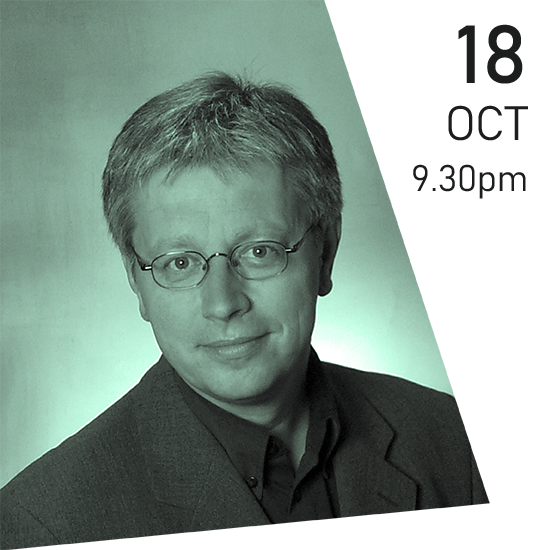 October 18, Friday, 9.30 pm
October 18, Friday, 9.30 pm
Igreja de São João Evangelista (Colégio), Funchal
Wolfgang Seifen, organ
The tradition of excellence in organ improvisation dates back to the Baroque era, standing out for its complexity and creativity. Organists such as Johann Sebastian Bach and Dieterich Buxtehude elevated improvisation to an art form, exploring multiple thematic and harmonic variations that expanded into a new musical rhetoric. Today, this practice continues to highlight the virtuosity and expressiveness of organists, both in the liturgical and concert contexts.
Ó Páscoa gloriosa, by António Ferreira dos Santos, is a hymn inherently linked to one of the most important events in the Christian liturgical cycle, the Resurrection of Christ. Composed by one of the most prominent Portuguese sacred musicians of the twentieth century, the work is filled with the spirit of joy and triumph considered the defining feature of the annual Easter celebration.
The chorales Gott, aller Schöpfung heilger Herr (known in Portugal as Povo teu somos, ó Senhor) and Großer Gott, wir loben dich express deep reverence and praise for God, emphasizing the richness of the German liturgical tradition. The former invokes the sanctity and majesty of the Creator with a tone of solemn and contemplative devotion. The latter, supported by the melody of the Te Deum, is a hymn of exaltation and thanksgiving, easily recognisable for its triumphant and jubilant character.
The Anthem of the Autonomous Region of Madeira exalts the natural beauty and unique identity of the archipelago. With lyrics by Ornelas Teixeira and music by João Victor Costa, the anthem celebrates the freedom, regional pride and determination of the Madeiran people, reinforcing their love for their homeland.
Concluding tonight’s concert, we will listen to an improvised musical triptych, which interweaves three melodic themes deeply rooted in the Marian tradition: Ave maris stella, A treze de Maio and Salve Regina. Each of these themes carries a significant symbolic and spiritual charge, reflecting the devotion and veneration of the Virgin Mary in different historical and cultural contexts.
The first movement is centered on Ave maris stella (Hail, star of the sea). This Marian hymn, of unknown origin, was widely used in Catholic liturgy and invoked as a spiritual guide for sailors and travelers. The melody is an invocation to the Virgin Mary as protector and guide of the faithful, especially in times of uncertainty.
The second movement incorporates the canticle A treze de Maio, a popular melody associated with the apparitions of Our Lady of Fátima in Portugal. The original version of the poem was written by poet Afonso Lopes Vieira, and set to music by Francisco de Lacerda. It became a hymn of devotion for millions of Catholics around the world. The melody is simple, but carries a deep emotional power, evoking the faith and hope of the pilgrims who have traveled to Fátima in search of solace and miracles, for more than a century.
The third and final movement of the triptych is based on the Salve Regina, one of the best-known Marian antiphons, whose origins date back to the eleventh century. This melody, traditionally sung at the end of Compline (night prayer), is a supplication to the Virgin Mary as Mother of Mercy.
— ANTÓNIO ESTEIREIRO —
Programmme
Wolfgang Seifen (1958)
¬ Prelude and fugue on «Ó Páscoa gloriosa»
(in German Baroque style)
¬ Two character pieces on «Povo teu Somos, ó Senhor» and «Großer Gott, wir loben dich»
(in German Romantic style)
¬ Fantasy and fugue on the Anthem of the Autonomous Region of Madeira
(in late Romantic style)
¬ Tryptique Symphonique
› Allegro risoluto («Ave maris stella»)
› Adagio espressivo («A treze de Maio»)
› Finale («Salve Regina»)
